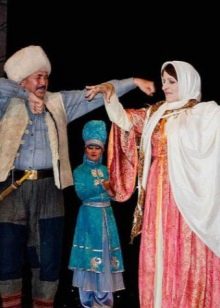People, also known as the Bagulals, are an indigenous ethnic group residing in the Dagestan Republic of the Russian Federation. The Bagulals are part of the larger Avar-Andic linguistic group, which includes several other ethnicities in the region.
The Bagulal people have a distinct culture and identity that sets them apart from other groups in the area. Traditionally, they have been primarily engaged in agriculture, animal husbandry, and handicrafts. They have a strong sense of community and maintain close ties with their extended families.
The Bagulal language belongs to the Northeast Caucasian language family and is spoken by the Bagulal people. However, due to various factors such as modernization, Russian influence, and urbanization, the usage of the Bagulal language has been declining over the years. Russian has become more dominant in everyday life, especially among the younger generation.
In terms of religion, the Bagulal people traditionally adhered to Sunni Islam, which was introduced to the region during the Arab conquests in the 8th century. Islam plays a significant role in their cultural practices, customs, and celebrations.
Bagulal culture is rich in traditions, folklore, and music. They have a strong oral tradition and storytelling plays an important role in passing down their history, myths, and legends. Traditional dances and music are also integral to their cultural heritage, with various instruments such as the dhol, balaban, and zurna being used in performances.
Like many indigenous communities, the Bagulal people face challenges in preserving their cultural heritage and language. Efforts are being made to promote and revitalize their language through educational programs and cultural initiatives. Additionally, organizations and institutions are working to document and study their traditions to ensure their preservation for future generations.
Overall, the Bagulal people are an integral part of the diverse ethnic tapestry of the Dagestan Republic, contributing their unique traditions, language, and cultural practices to the region’s rich heritage.



















Add Comment